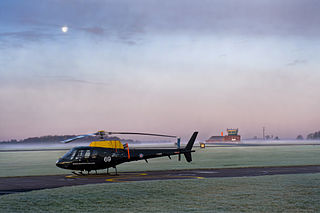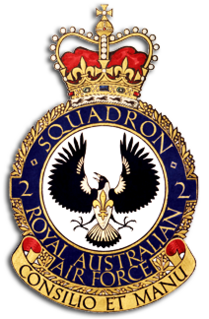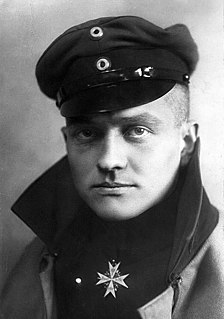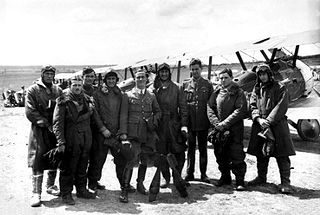Early life
Cummings was born to Doctor and Mrs. H. L. Cummings in Franklin, Tasmania, Australia on 13 April 1896. He had a brother, Roy, who would serve in the Australian Flying Corps with him. [2]
Cummings (serial number 1026) enlisted in the 2nd Signal Company, Australian Imperial Force on 27 October 1914, giving his profession as cart driver and claiming 15 months prior service in C Company, 93rd Regiment of the militia. [3] He embarked for departure from Australia in December 1914; he was in the 15th Battalion as a bugler. He served in the Gallipoli Campaign before transferring to aviation. [4] [5]

The First Australian Imperial Force was the main expeditionary force of the Australian Army during World War I. It was formed on 15 August 1914, following Britain's declaration of war on Germany, initially with a strength of one infantry division and one light horse brigade. The infantry division subsequently fought at Gallipoli between April and December 1915, being reinforced by a second division which was later raised, as well as three light horse brigades. After being evacuated to Egypt the AIF was expanded to five infantry divisions, which were committed to the fighting in France and Belgium along the Western Front in March 1916. A sixth infantry division was partially raised in 1917 in the United Kingdom, but was broken up and used as reinforcements following heavy casualties on the Western Front. Meanwhile, two mounted divisions remained in the Middle East to fight against Turkish forces in the Sinai and Palestine.

The Australian Army Reserve is a collective name given to the reserve units of the Australian Army. Since the Federation of Australia in 1901, the reserve military force has been known by many names, including the Citizens Forces, the Citizen Military Forces, the Militia and, unofficially, the Australian Military Forces. In 1980, however, the current name—Australian Army Reserve—was officially adopted, and it now consists of a number of components based around the level of commitment and training obligation that its members are required to meet.

The 15th Battalion was an infantry battalion of the Australian Army. Formed in 1914 as part of the all-volunteer Australian Imperial Force from Queensland and Tasmanian recruits, the battalion fought during the Gallipoli Campaign and on the Western Front during the First World War. It was disbanded after the war in 1919, but later re-raised as a part-time Citizens Forces unit based in Queensland in 1921, consisting of a mixture of volunteers and conscripts. Economic pressures and limited manpower resulted in the battalion being amalgamated with other battalions a couple of times during the inter-war years. In mid-1939, as rising tensions in Europe led to an expansion of the Australian military, the battalion was re-formed in its own right. During the Second World War the 15th Battalion was mobilised for wartime service and initially undertook defensive duties in Australia before taking part in the fighting against the Japanese in New Guinea and Bougainville in 1943–1945. The battalion was disbanded in 1946 and never re-raised.
World War I aviation service
Cummings was assigned to train at the flying school at RAF Shawbury. He completed all phases of his training in three weeks, and was posted to No. 2 Squadron AFC. Although he had yet to score an aerial victory, his rise through the ranks was rapid, and he was appointed Flight Commander on 17 October 1916. He subsequently liaised with Rene Fonck in operations against Manfred von Richthofen's Flying Circus. [6] [Note 1]

Royal Air Force Shawbury otherwise known as RAF Shawbury is a Royal Air Force station near the village of Shawbury in Shropshire in the West Midlands of England.

No. 2 Squadron is a Royal Australian Air Force (RAAF) squadron that operates from RAAF Base Williamtown, near Newcastle, New South Wales. From its formation in 1916 as part of the Australian Flying Corps, it has flown a variety of aircraft types including fighters, bombers, and Airborne Early Warning & Control (AEW&C). During World War I, the squadron operated on the Western Front conducting fighter sweeps and ground-attack missions. It was disbanded in mid-1919, following the end of hostilities. The squadron was briefly re-raised in 1922 as part of the newly independent RAAF, but was disbanded after only a couple of months and not reformed until 1937. It saw action as a bomber unit in the South West Pacific theatre of World War II and, equipped with English Electric Canberra jets, in the Malayan Emergency and the Vietnam War. The squadron was again disbanded in 1982, following the retirement of the Canberra. It was re-formed in 2000 to operate the Boeing 737 AEW&C "Wedgetail". One of the six Boeing 737s was deployed to the Middle East in September 2014, as part of Australia's contribution to the military coalition against ISIS.

Manfred Albrecht Freiherr von Richthofen, also known as the "Red Baron", was a fighter pilot with the German Air Force during World War I. He is considered the ace-of-aces of the war, being officially credited with 80 air combat victories.
Details of Cummings' service over the next year and a half are missing. By May 1918, however, he was assigned to 2 Squadron AFC as a Royal Aircraft Factory SE.5a pilot. On 3 May 1918, he scored his first aerial victory. [3] His brother Roy mailed home a copy of orders describing the action; this was reprinted in The (Hobart) Mercury in the Cummings' native Tasmania. The reprint gives a vivid description of early aerial warfare:

Tasmania is an island state of Australia. It is located 240 km (150 mi) to the south of the Australian mainland, separated by Bass Strait. The state encompasses the main island of Tasmania, the 26th-largest island in the world, and the surrounding 334 islands. The state has a population of around 526,700 as of March 2018. Just over forty percent of the population resides in the Greater Hobart precinct, which forms the metropolitan area of the state capital and largest city, Hobart.
"Lieutenant E. D. Cummings...attacked a...triplane, and fired a burst from both guns into it. The enemy aircraft immediately went down in a spin, followed by Lieutenant Cummings, still firing. The enemy aircraft then turned on its back, and finally crashed....At this point Lieutenant Cummings was attacked by four...triplanes, who shot away his elevator controls, instrument board, petrol and oil tanks; his machine went down almost out of control, but he managed to keep it out of a spin until it...crashed. His safety-belt broke, and he was thrown clear of the machine into a shell-hole...." [2]
Nothing daunted, Cummings went on to score eight more confirmed aerial wins and rise to the rank of captain. His bravery would win him a Distinguished Flying Cross, which would be gazetted on 8 February 1919:
"This officer has proved himself an able and determined leader of offensive patrols. In carrying out these raids he has met with conspicuous success, heavy damage being inflicted on enemy material and personnel. This has been due in the main to his brilliant leadership and skilful navigation. Capt. Cummings possesses, in a marked degree, courage, combined with cool judgment." [7]
Between the wars
Cummings returned to Australia after the war; on 28 August 1919 he flew an aerobatic exhibition in a Sopwith Pup over downtown Hobart, including eight loops. The exhibition was a public relations stunt to draw a crowd to subscribe to a Peace Loan of 750,000 Pounds to care for military veterans. [6] After his departure from Hobart, he barnstormed locally for the Peace Loan, despite engine trouble after departing Launceston for Longford and Devonport on 9 September 1919. [8]
On 11 February 1920 Cummings was invested with the Distinguished Flying Cross by General William Birdwood in Cummings' home town of Franklin. [9]
On 7 June 1923 Cummings was granted a short service commission in the Royal Air Force as a Flying Officer. [10]
On 7 June 1928 he was transferred to Class A Reserve of the Royal Air Force; he would remain in the reserves in various capacities until World War II. [11] [12] [13] [14] [15]
While Cummings was a reservist he was promoted to Flight Lieutenant on 4 February 1931. [16]
Also during this time, on 27 April 1932, he was elected to membership in the Royal Aero Club. [17]
This page is based on this
Wikipedia article Text is available under the
CC BY-SA 4.0 license; additional terms may apply.
Images, videos and audio are available under their respective licenses.

Richard Pearman Minifie, was an Australian fighter pilot and flying ace of the First World War. Born in Victoria, he attended Melbourne Church of England Grammar School. Travelling to the United Kingdom, he enlisted in the Royal Naval Air Service in June 1916. Accepted for flight training, he completed his instruction in December and joined No. 1 (Naval) Squadron RNAS on the Western Front in January 1917, flying Sopwith Triplanes. He went on to score seventeen aerial victories on this type of machine throughout the year, becoming both the youngest Australian flying ace of the First World War and No. 1 (Naval) Squadron's highest-scoring ace on the Triplane. The unit re-equipped with the Sopwith Camel late in 1917, with Minifie going on to achieve a further four victories on the aircraft, raising his final tally to a score of twenty-one aircraft shot down.
Captain William Melville Alexander was a Canadian First World War flying ace, officially credited with 22 aerial victories.
Captain Gerald Gordon Bell was a Canadian First World War flying ace, officially credited with sixteen aerial victories while serving in the British Royal Flying Corps and Royal Air Force.
Lieutenant Hartley Pullan (1899–1968) was a World War I flying ace credited with five aerial victories.
Wing Commander Frederick James Powell was a British World War I flying ace credited with six confirmed and nine unconfirmed aerial victories. He remained in the RAF post-war, serving until 1927, then returned to military service during World War II.
Lieutenant Eric Walker was a British World War I flying ace credited with six aerial victories.
Wing Commander Edward Duncan Crundall was an officer of the British Royal Air Force, who served in World War I, becoming flying ace credited with seven aerial victories, and also in World War II.
Captain Rowan Heywood Daly was a British flying ace credited with three aerial victories during World War I, and an additional four victories in Russia during 1919.
Captain John Gamon was an English World War I flying ace credited with seven aerial victories.
Flight Lieutenant Norman Miers MacGregor was a British World War I flying ace credited with seven aerial victories, including over German ace Kurt Wolff.
Captain Howard John Thomas Saint was a Welsh First World War flying ace credited with seven aerial victories. He became the chief test pilot for the Gloster Aircraft Company in the 1930s.
Captain Geoffrey Herbert Hooper was an Australian World War I flying ace credited with eleven aerial victories, all against German fighter planes.
Group Captain Reginald Stuart Maxwell, was a British flying ace during World War I. He continued in RAF service until 1941, and served in the RNVR during World War II.
Major Thomas Francis Netterville Gerrard was a British World War I flying ace credited with 10 aerial victories. He died following a post-war equestrian accident.
Flight Lieutenant Arthur Clunie Randall was a Scottish World War I flying ace credited with 10 aerial victories.
After earning a Distinguished Flying Cross during the war, he remained in military service until 1926.
Air Vice Marshal John Denis Breakey & Bar was a senior officer of the Royal Air Force. He began his military career in the Royal Naval Air Service during the First World War. As the RNAS was merged into the Royal Air Force, he scored nine aerial victories as a fighter pilot. He served throughout the interwar period and into the Second World War, rising to air vice marshal.
Frederick John Shaw Britnell was a flying ace in the Royal Naval Air Service and Royal Air Force during World War I. He was credited with nine aerial victories. He returned to service for World War II, remaining in the Royal Air Force until 1954.
Captain George Goodman Simpson was an Australian-born flying ace credited with eight confirmed victories while flying for the Royal Naval Air Service during World War I. He would serve his country again during World War II.
Flight Lieutenant Desmond Fitzgerald Fitzgibbon was a British flying ace who served in the Royal Naval Air Service during World War I, and was credited with eight aerial victories. He returned to serve in the RAF for a few years in the early 1920s, and again during World War II.

Captain William John MacKenzie was an American flying ace who served with British naval aviation during World War I. He was one of the combatants in Manfred von Richthofen's last fight, being wounded in action. He was awarded the Distinguished Flying Cross, and the Croix de Guerre for his valor. He survived the war and was discharged in 1919. His history after 1942 is unknown.









